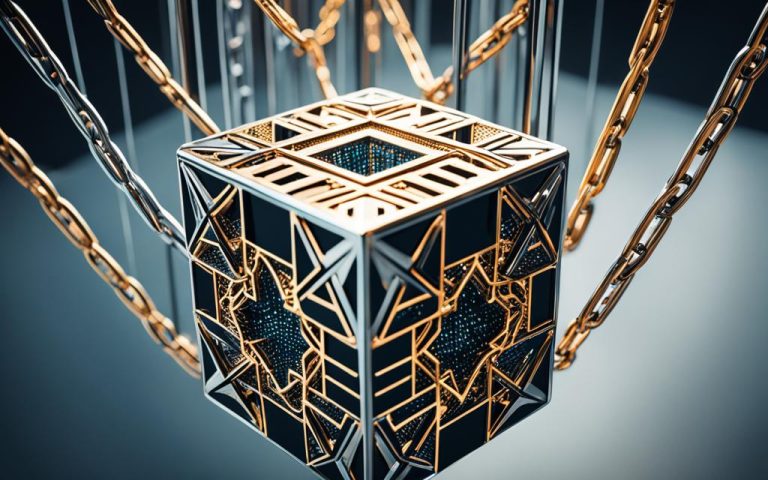A decentralized exchange, or DEX, lets users trade cryptocurrencies directly with each other. They do this without middlemen, using blockchain smarts to make things safe and open. This setup cuts the risk of cheating.
DEXs are key to decentralized finance (DeFi) and give users complete control over their money. You’ll find order book DEXs and automated market makers (AMMs) as the main types.
DEXs boost security and cut the risk of losing money through scams. They operate without a central figure, making things more secure and open. You’re in charge of your funds, reducing the chance of theft or loss.
Through blockchain and smart contracts, DEXs drop the risk of trusting someone else with your money. This means you don’t have to trust a central place with your funds.
They also fight against censorship. Since deals are made user to user without middlemen, no one can block or limit trades. This makes sure everyone can access and join in.
Yet, DEXs have downsides, like possible code bugs that can cause security issues. Also, they might not have as much money to trade with, which could lead to bigger price changes and fewer trading choices.
In sum, decentralized exchanges offer a way to trade cryptocurrencies that’s secure, open, and free from control. As DeFi becomes more popular, DEXs will be crucial for direct trading and giving people control over their digital money.
How Does a DEX Work?
Decentralized Exchanges (DEXs) are changing the way we trade digital assets. They don’t use middlemen like centralized exchanges do. Instead, DEXs rely on smart contracts to automate trading.
With DEXs, you keep control of your funds. You send them to a smart contract, which acts as a safe keeper. This way, there’s no need to trust an exchange with your money, lowering theft and loss risks.
Smart contracts are crucial in DEXs. These contracts follow specific rules and carry out trades automatically when conditions are met. They make trading secure and open, with all records on the blockchain. This prevents any chances of changing or cheating.
There are mainly two types of DEXs: order book DEXs and Automated Market Makers (AMMs).
Order book DEXs: These work like traditional exchanges but without centralized control. They match orders from buyers and sellers in a decentralized book. When an order’s price and amount fit, the smart contract does the trade. Notable examples are Uniswap, SushiSwap, and 1inch.
AMMs (Automated Market Makers): AMMs do not use order books. Instead, they set prices with liquidity pools and formulas, based on tokens in the pool. When trading, users interact directly with the pool, and the system keeps prices stable. Examples include Balancer, Curve, and PancakeSwap.
DEXs charge fees for using the blockchain and for trading. These fees differ by DEX and pay those providing liquidity and help keep the DEX running.
| Order book DEXs | AMMs |
|---|---|
| Utilize on-chain or off-chain order books | Utilize liquidity pools and algorithms |
| Matching buyers and sellers | Direct token swaps with the liquidity pool |
| Examples: Uniswap, SushiSwap, 1inch | Examples: Balancer, Curve, PancakeSwap |
Benefits and Risks of Decentralized Exchanges
Decentralized exchanges (DEXs) are changing how we trade cryptocurrency. They offer both good and bad points for users. DEXs enhance security, privacy, and transparency.
With a DEX, you keep your private keys and trade directly with others. This cuts out the middleman. It lowers the chances of hacking or theft. Plus, all trades are recorded on the blockchain, making things clear and fair.
But, using DEXs can have downsides too. There might be issues with smart contracts. And, they often don’t have as much trading action as bigger exchanges. It’s crucial to know these risks before you start trading on DEXs.
To dive deeper into DEXs, check out trusted sources. Visit the Chainlink Education Hub, Coin Bureau, and Rejolut. These sites can give you a good understanding of DEXs. They’ll help you make smart choices in the world of decentralized trading.
FAQ
What is a decentralized exchange (DEX)?
A decentralized exchange, or DEX, lets users trade cryptocurrencies directly with each other. It works without middlemen, which means there’s no need for a third party.
How do DEXs work?
DEXs use smart contracts for trading. These contracts handle the trades automatically. Instead of using a central exchange, your assets go to a smart contract. This matches orders and completes trades.
What are the main types of DEXs?
There are mainly two types of DEXs: order book DEXs and automated market makers (AMMs). Order book DEXs work like regular exchanges. They match buyers with sellers. AMMs use liquidity pools and algorithms to set prices based on the tokens’ proportion in the pool.
What are the benefits of using a decentralized exchange?
DEXs are great for many reasons. They are safer and keep your privacy since you control your keys. You trade directly with others. There’s less risk without a third party holding your funds. DEXs are transparent, recording all trades on the blockchain for fairness and security.
What are the risks associated with decentralized exchanges?
Despite their benefits, DEXs come with risks. The smart contracts they use can have vulnerabilities, risking your funds. They might also have less liquidity than centralized exchanges. Users must ensure their funds’ security and know how to use DEXs properly.



















